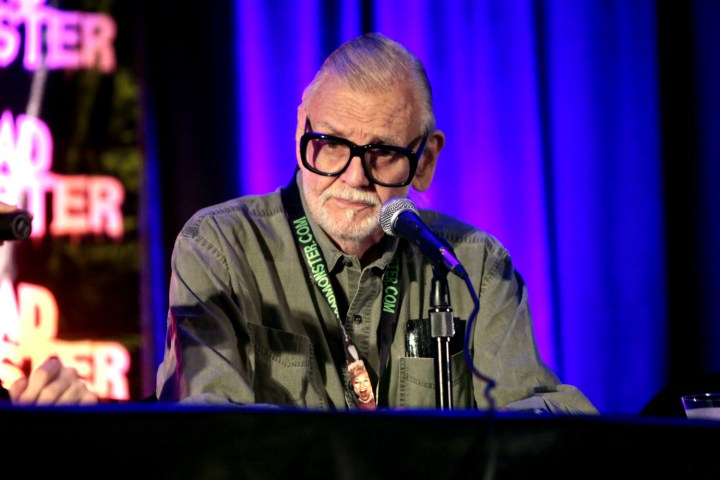
His wife, Suzanne Desrocher Romero, and his daughter, Tina Romero, were at his side at the time of his death, according to his family.
A visionary filmmaker best known for his work in the horror genre, Romero made Night of the Living Dead for just $114,000 after co-writing, directing, and editing the film, and even played an on-screen role in it as well. The film went on to become a massive hit, and was groundbreaking for a variety of reasons, including its role in re-igniting the zombie, its success on a shoestring budget, and Romero’s decision to cast an African-American actor in the film’s lead role.
Duane Jones, who played Ben in Night of the Living Dead, is regarded as both the first African-American to play the lead in a mainstream horror film and one of the first African-American actors to play a lead role that wasn’t originally specified for a black actor. Recalling the decision to cast Jones, Romero said he was “the best actor we met to play Ben. If there was a film with a black actor in it, it usually had a racial theme, like The Defiant Ones. Consciously I resisted writing new dialogue because he happens to be black. We just shot the script.”
Romero followed Night of the Living Dead with the romantic comedy There’s Always Vanilla, one of several projects he directed outside the horror genre. Those projects included 1981’s Knightriders, which cast Ed Harris and Tom Savini as members of a troupe of Renaissance Fair regulars who joust on motorcycles while attempting to live by Arthurian ideals, and several episodes of the 1970s sports documentary series The Winners.
Still, the genre most closely associated with Romero is horror, and he went on to direct many popular — and terrifying — examples of the genre over a career that spanned more than 40 years. His first horror film after Night of the Living Dead was 1972’s Season the Witch, followed by The Crazies in 1973. The latter film was remade in 2010.
He finally gave fans a sequel to Night of the Living Dead in 1978 with Dawn of the Dead, which found similar success at both the U.S. box office and abroad, and achieved a similarly iconic status with its story about a group of people fleeing the zombie outbreak who take refuge in a shopping mall. As with Night of the Living Dead, Romero blended the mix of shambling creatures and the setting for the film to create a potent political statement — in this case, a reflection on consumerism and greed.
I always used the zombie as a character for satire or a political criticism …
Dawn of the Dead also marked Romero’s first film with Savini, who served as a makeup and special-effects artist on the project and went on to collaborate with Romero on many of his subsequent films.
Romero later followed Dawn of the Dead with another sequel, 1985’s Day of the Dead, which was set within a military bunker deep underground. That film continued the franchise’s success both critically and commercially. It would be 20 years before he returned to the series, and the final three films that he directed all served to extend his “Of The Dead” franchise. His 2005 film Land of the Dead was another critical and commercial success, and it was followed by two smaller films: 2007’s Diary of the Dead and 2009’s Survival of the Dead. The 2009 film would be his final project as a director, although he also worked on several spinoff projects set within the universe of the franchise for various other media, including several comic book series.
Although he helped kick-start the zombie genre decades ago, Romero made it clear on several occasions that he wasn’t a fan of some of the recent, popular projects featuring living-dead threats. In a 2013 interview with Big Issue, Romero explained why he declined an invitation to direct some episodes of The Walking Dead television series on AMC.
“Basically it’s just a soap opera with a zombie occasionally,” he said of the show. “I always used the zombie as a character for satire or a political criticism and I find that missing in what’s happening now.”
Along with his work on zombie films, Romero also directed several well-regarded horror films outside of that theme, including a pair of films involving horror novelist Stephen King: 1982’s horror anthology Creepshow, and an adaptation of King’s novel The Dark Half in 1993.
Romero is survived by his wife and three children, and his creative legacy lives on in the countless filmmakers, writers, and creators in various media who count him among the inspirations for their work.



